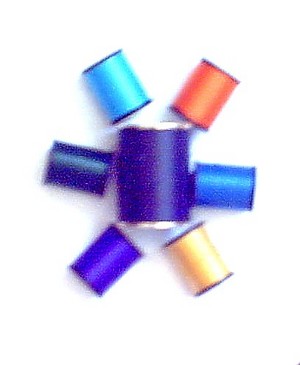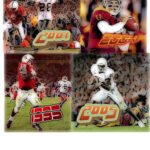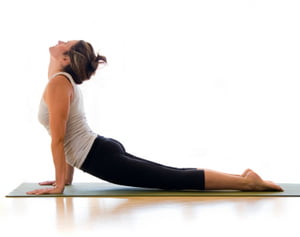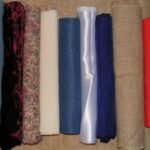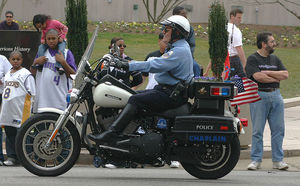Sewing thread is available in a bewildering array of labels, mostly describing what the manufacturer thinks you should use it for. Those labels can be helpful. But here’s more information, including a description of thread content and some good – and possibly bad – points about each.
Thread types
All Purpose – This thread is usually made from cotton-covered polyester. The cotton gives it strength and the polyester gives it a bit of stretch, making it a good choice for both hand- and machine-sewing and for just about any kind of material, especially blends. The few exceptions include really thick or stiff upholstery fabrics, vinyl, and leather.
Bobbin – Intended for the bobbin of the sewing machine, this thread may be made from cotton, polyester, cotton-covered polyester, or filament. Filament is very strong but also fairly fine and light, and a good choice for machine embroidery.
Embroidery – Usually made from rayon, this thread is suitable only for machine embroidery; it’s not strong enough for regular sewing.
Heavy Duty/Upholstery – Intended for sewing upholstery and other heavy or stiff fabrics, this thread is usually made from nylon. It’s just about the strongest of all the threads available on a spool. It’s also thicker than most other threads.
Lightweight/Extra Fine – Thinner than most other threads, this one is great for lighter, thinner, or sheer fabrics.
Metallic – There are two different kinds of metallic thread. One is actually a combination of metal and plastic. It’s very shiny and the colors are intense. The other kind is made from aluminum wrapped around a core thread. It’s easier to use than the first type, but both have a tendency to build up static electricity, so they should be unwound from their spools (and rewound, if you like) before you use them. If you’d like to use metallic thread for machine sewing or quilting check the label carefully to make sure it’s suitable for use in a machine.
Monofilament/Transparent Nylon – Colorless and very strong, this thread is a good choice when you need invisibility.
Quilting – Usually made from 100% cotton (like the fabrics most quilters use), this thread is finished to make it smoother so it will go through several layers of fabric and batting easily.
Serger – This thread tends to be thinner because it’s usually used with three other spools in a serger. It comes in large cones, which are tempting to buy for regular sewing projects because they have so much yardage on them for the price. But this is not really a good idea; a single strand won’t be as strong as a strand of regular thread.
Topstitching or Buttonhole Twist – Thicker than some other types, this thread is good for (you guessed it) buttonholes and for thicker fabrics, like denim. If you’re using it on a machine sewing it’s a good idea to increase the stitch length and decrease the tension.
Quality considerations
Even without considering types, there’s a wide range of variability when it comes to thread price. If you’re just doing a little hand sewing now and then – for the occasional repair or hem job – price may not be an issue. But if you’re doing some serious sewing or quilting it’s probably best to stay away from “bargain-priced” thread.
Cheap thread is usually not as densely spun as the more well-known brands. This makes it weaker and more prone to breakage. Even if it doesn’t break, it may create so much lint that you’ll find yourself stopping to clean your machine much more frequently than you’d like.
What about prewound bobbins?
You can now purchase bobbins already wound with thread. You won’t have the color selection that you’d have if you wound the bobbins yourself, but these can be a good choice, especially if you’re doing machine embroidery. Prewound bobbins save time, and because they’re wound on industrial machinery – tighter and more evenly than a human could – they usually hold a lot more thread than a bobbin wound on a regular sewing machine.
Prewound bobbins are becoming very popular and, depending on your intended use, may be a good choice. Just be careful of quality. If you find the bobbin thread breaking frequently or creating a lot of lint you might want to go back to winding your own bobbins.
A few final words
The list above can be overwhelming. To keep it simple: If you’re just starting out, or if you don’t plan to do a lot of sewing, stay with all purpose thread. It comes in the widest choice of colors, and it will meet your needs until – or unless – you decide to become more serious or work on specific projects.
